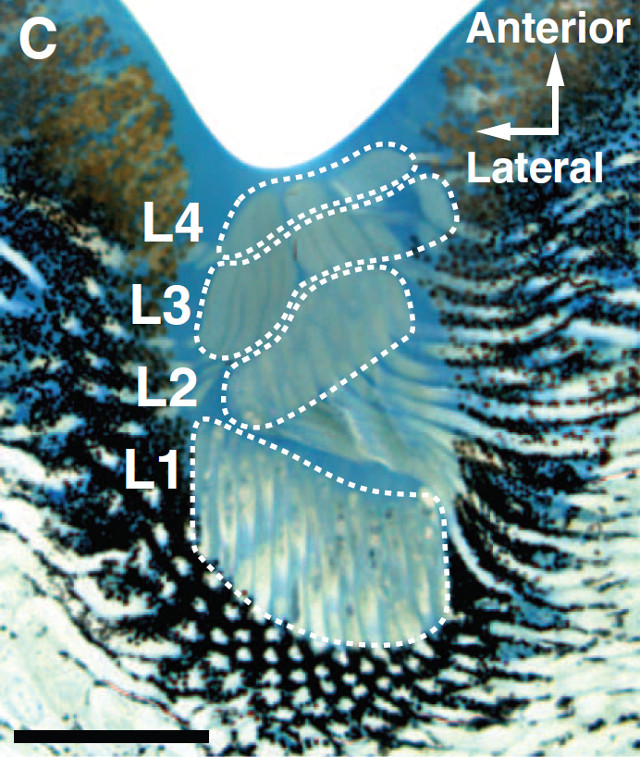The vast majority of animals judge distance by using binocular (two-eyed) stereoscopic vision; other animals use accommodation (how much the animal has to adjust focus) and motion parallax (how much the image moves across the retina). But a new paper* shows that at least one animal, a jumping spider known as Hasarius adansoni, perceives depth by using image defocus, comparing a defocused image from one sensor with a focused image from another sensor.

A horizontal cross-section of the spider retina, showing the different photoreceptive layers at different depths within the retina.
The researchers investigating the spider’s eye showed that their hypothesis about depth perception was correct with a very neat experiment. They used different colours of light, which are refracted by the spider’s eye by different amounts and therefore have different focal lengths and took video of the spider’s jumping attack. Under green light, which is detected by the L1 and L2 layers indicated above the spiders were able to accurately judge the distance to their prey, but under red light, which is not detected by the L1/L2 layers the spiders jumped short (as red light has a shorter wavelength than green). This showed that the spider was judging distance by comparing a defocused image on L2 with a focused image on L1; under red light the spider receives incorrect information about the amount of defocusing required and therefore doesn’t attack correctly.
* Takashi Nagata et al, “Depth Perception from Image Defocus in a Jumping Spider”, Science 335 (2012): 469-471. doi: 10.1126/science.1211667.
One thought on “Depth perception in jumping spiders”